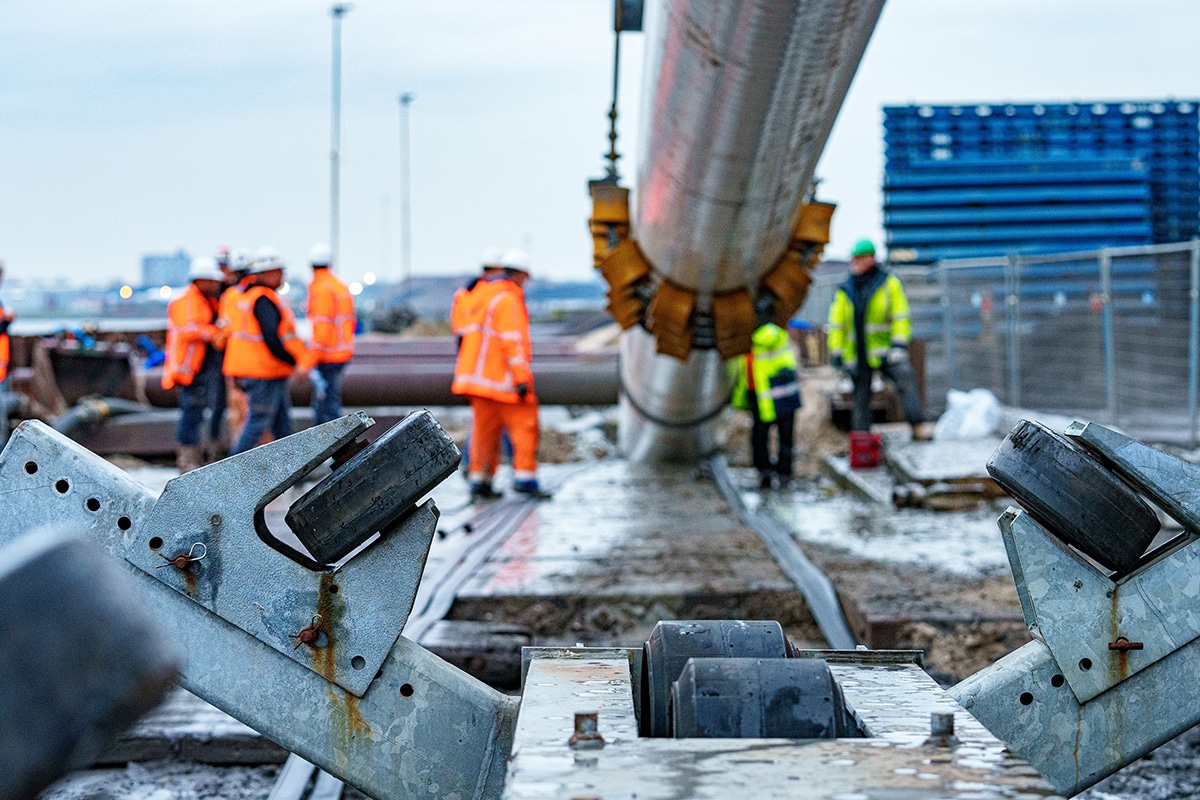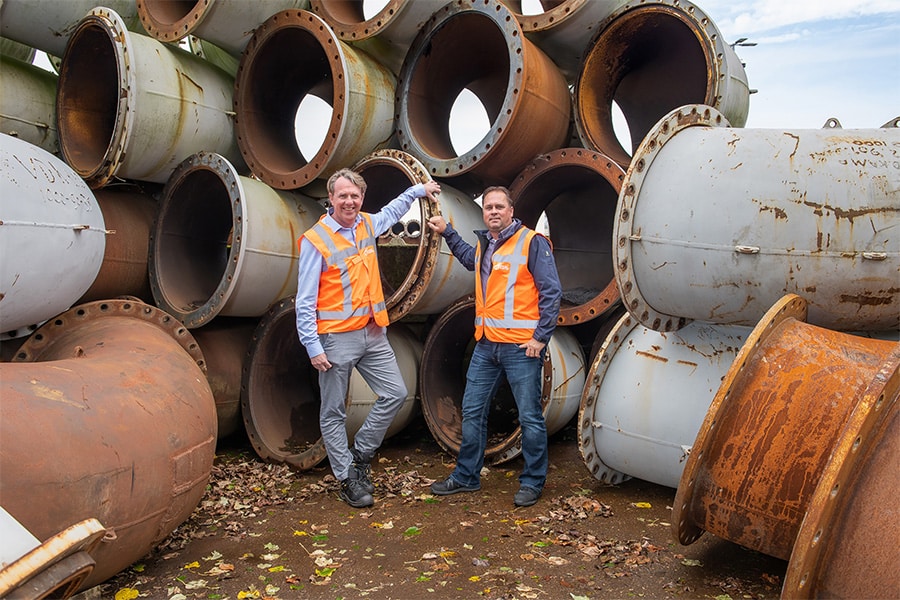
Pipes for laying pipes or as foundations
The final ordering of steel tubes is the easiest part of a project. Parties that process the pipes afterwards know that the real challenge only begins then. Then it is good that there are suppliers like Van Leeuwen Buizen who simplify the laying or processing of pipes with additional services.
A good example of Van Leeuwen's full service approach is a project in the Brabant Biesbosch, where a new water inlet and pumping station were realized for Evides Water Company. This required considerable amounts of large pipes in an area that you want to leave as much as possible undisturbed. "These were really big guys," explains Cees van Overloop, Van Leeuwen's project manager, "with a diameter of DN2100 (normal is max. DN1200), a length of 17 m and a weight of about 21 tons each. Together with the contractor, we mapped out the logistics plan in which the heavy pipes were moved as little as possible and the environment was minimized."
Complete service
At a location less than 400 m away from the supply ship, Van Leeuwen realized a temporary storage site for a large part of these enormous steel pipes, with space for the welding line and the necessary cranes. After "double joining," the now 42-ton, 34-meter-long tubes were loaded onto pontoons via the same quay and transported to the Biesbosch. Van Overloop: "We provided a complete service here, including the coating of the tubes and the certifications. By appointing an experienced project team, we were always able to switch gears quickly and accommodate changes that frequently occur on such projects."

Pile tube piles for foundation
Another example of additional services for GWW projects is the trumped foundation pipe of Combulex, a subsidiary of the Van Leeuwen Pipe and Tube Group. The drumming of pipes in itself is not new. Crimped pipes in zinc and copper, which could be pushed together by the dilated end, were often used before the use of compression fittings. Combulex now brings the trumped pipe in steel and fitted with a base plate, making it easy to drive the pipe into the ground.
Tube as formwork
The truncated pipe elements are inserted into the ground piece by piece and welded together until a load-bearing layer is reached. "This is regularly only at a depth of 30 m," says Martijn 't Hart, commercial director of Combulex. "Once at length, the tube forms the formwork for a poured foundation pile."




